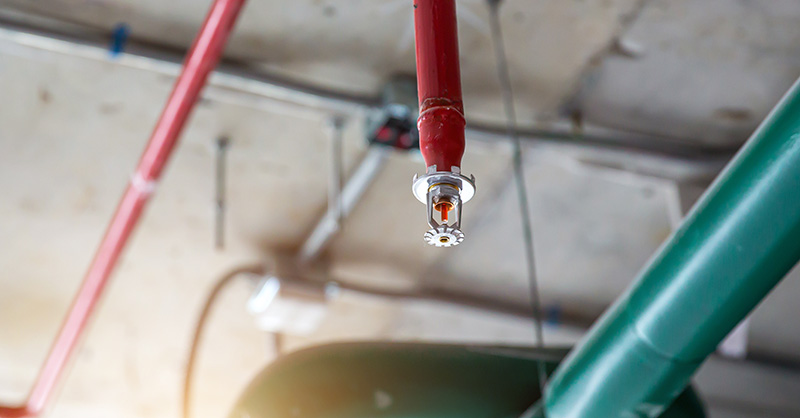Types of Fire Sprinkler Systems: Choosing the Right Protection for Your Needs

The modern-day automatic sprinkler was introduced to the US in 1874 by Henry S. Parmelee, who owned a piano manufacturer. The system was developed after the Parmelee Piano Company burned down in 1865. Since then, sprinkler systems have continued to improve and become integral to buildings.
Why is a Fire Sprinkler System Important?
Building fire suppression systems protect property and life. These systems protect high-hazard storage and occupancies by controlling a fire and preventing it from spreading. This often results in less destruction of a building and its contents and more time for occupants to evacuate the building out of harm's way. It is important to note that most fire suppression systems are not designed to extinguish a fire. The purpose of a building fire suppression system is to prevent an active fire from growing in intensity until the fire department arrives to extinguish the fire.
Types of Sprinkler Systems
- Wet Pipe Systems: Wet pipe systems are the most common type of system used and are often found in low-medium hazard occupancies. These systems work well in environments that are temperature regulated and are not subject to freezing temperatures. Wet pipe systems operate by pressurized pipes filled with water. When the sprinkler heads reach a specific temperature, they activate the sprinkler head. Only the sprinkler heads that reach a specific temperature will activate, preventing all sprinklers within the system from going off.
- Dry Pipe Systems: Dry pipe systems are used in areas where temperatures will reach below freezing. They are good for low-medium hazards, such as parking garages or warehouses that are not heated. The pipes are filled with pressurized air or nitrogen. When the sprinkler head is activated, the air escapes the system, and the valve opens and floods the pipes with water, continuing like a wet pipe system.
- Deluge Systems: Deluge systems are used in high-hazard areas that are required to flow high amounts of water. These systems are seen in areas such as aircraft hangars, hazardous chemical/explosive storage and power plants. They are typically divided into two types: early suppression fast response (ESFR) and in-rack sprinklers.
- ESFR: These are typically used as an alternative to in-rack storage because they work well for large areas where racks are not needed and there is significant warehouse storage.
- In-Rack: These systems can support suppression needs without using other sprinkler systems. They are typically used in large warehouses with pipes that run between racks.
Types of Fire Sprinkler Heads
- Upright: This type is typically used in areas where greater coverage may be required or where obstructions may be present. They are typically installed with the deflector facing up to protect the head from forming any dust or debris. They may be used in office areas with open ceilings or other low-medium hazards.

- Pendant: This type hangs from above pipes and is typically the most common type of sprinkler head. Pendant heads also have slight differences depending on your needs. They can come with a corrosive-resistant finish, caged and various other minor differences.

- Sidewall: These sprinkler heads are mounted to the sides of walls. They are typically used in areas that do not have pipes between floors. They may also be used in small rooms or hallways to save space above. They are primarily found in hotels and other commercial areas with limited space.

Sprinkler heads are not limited to these three categories. They can be modified when approved by fire departments based on the organization’s needs. Various types of special heads are available, including concealed sprinkler heads, vertical sidewalls and others. Consult with a licensed fire sprinkler professional or your local fire department to determine the best systems for your organization.
Prevent Significant Fire Loss with a Sprinkler Plan Review
Download the guides below to learn more about the importance of Automatic Sprinkler Plan Reviews and discover how Great American's Loss Control team can assist you in reviewing blueprints for new construction, renovations or existing buildings.
For Agents
Automatic Sprinkler & Life Safety Plan Review Guide









